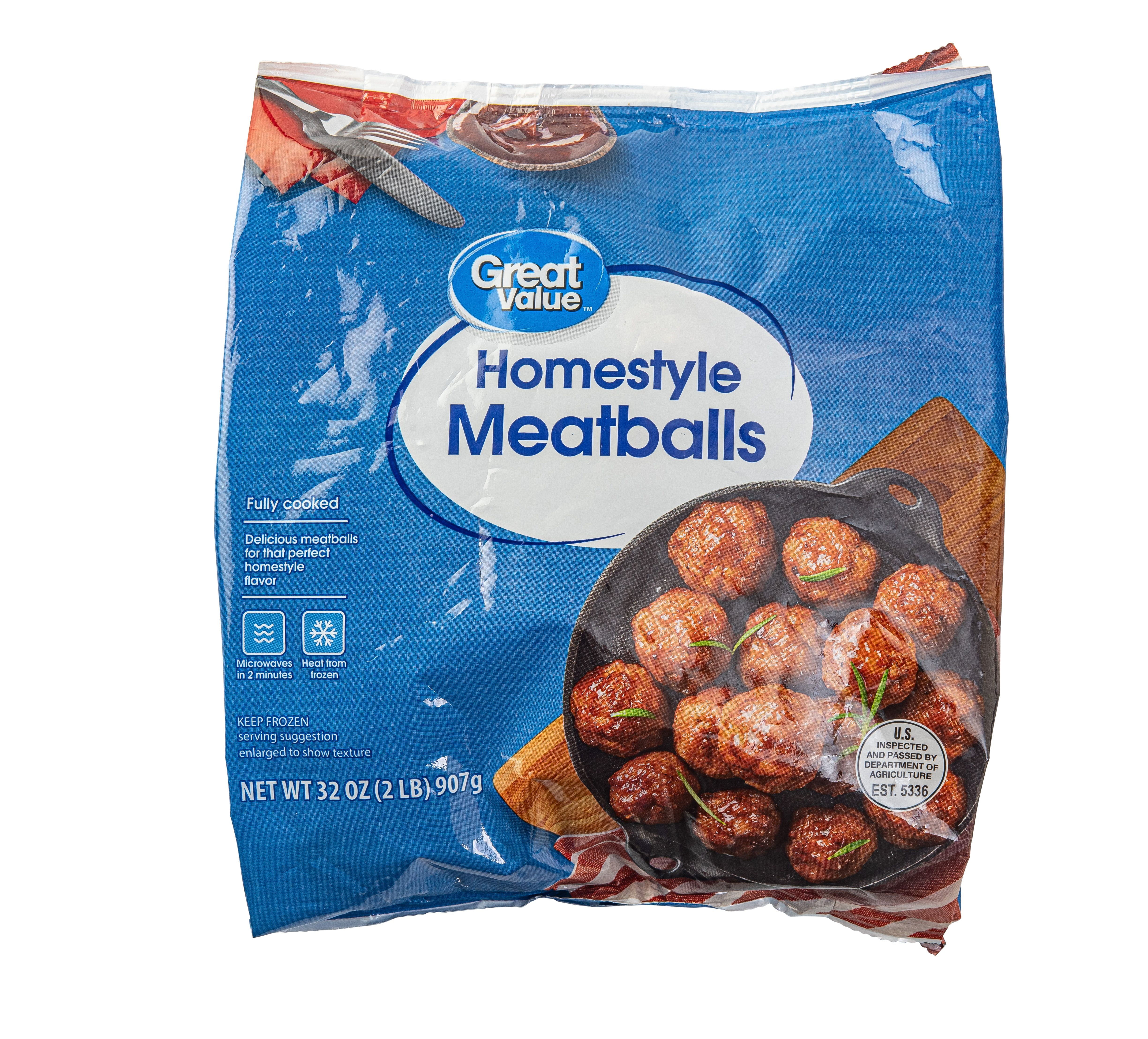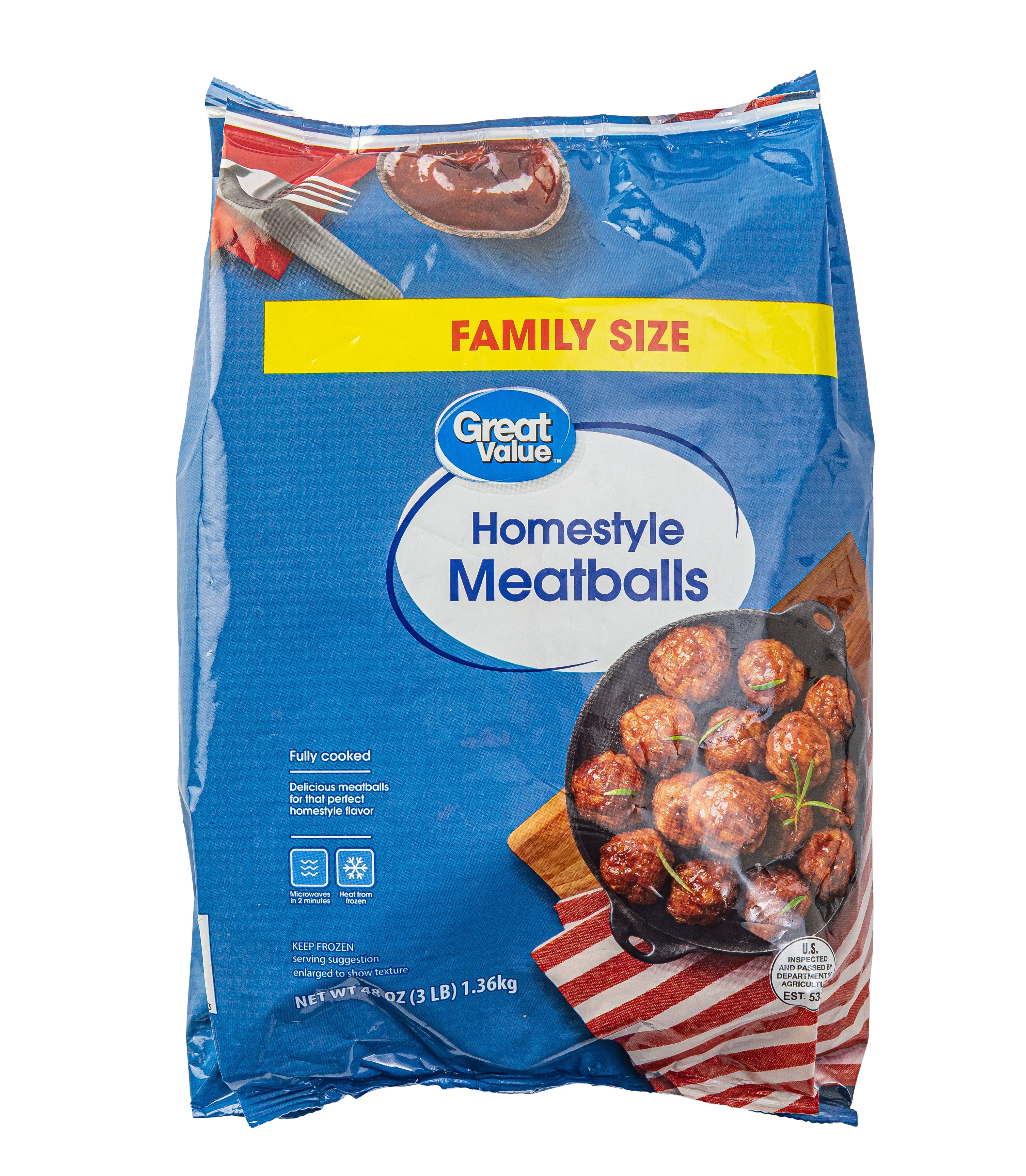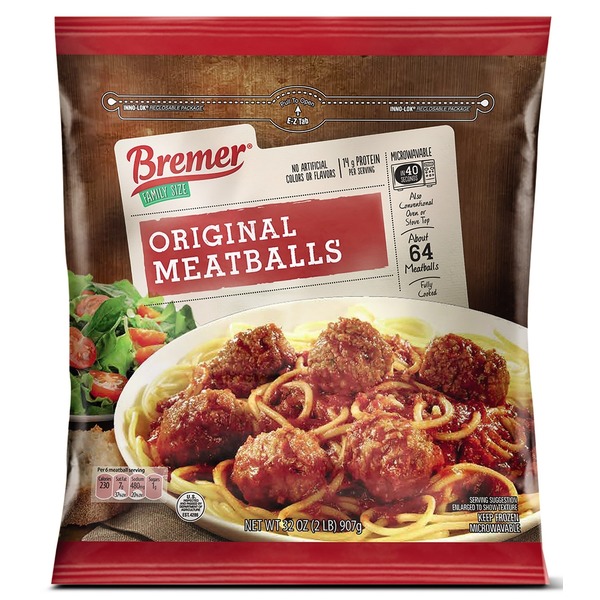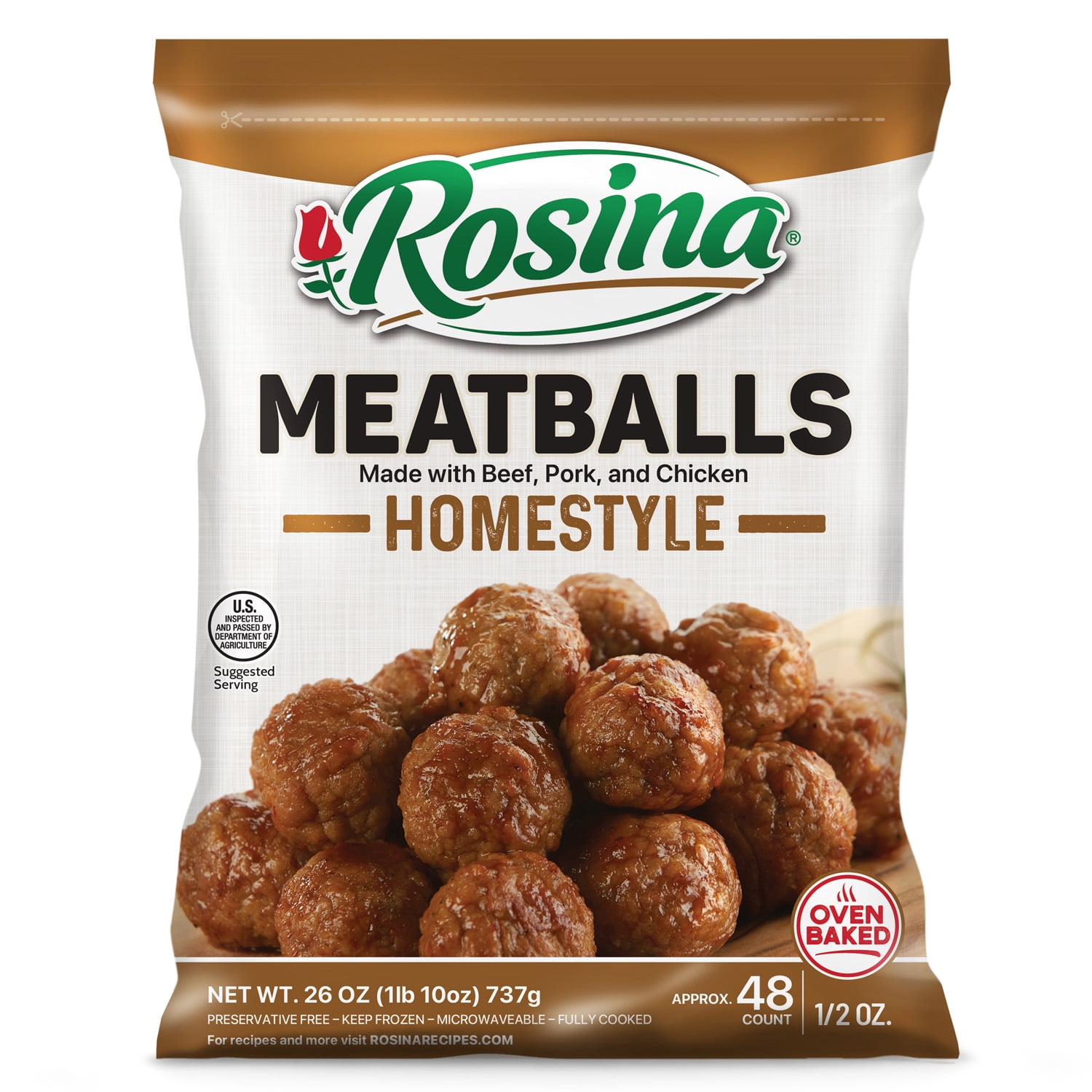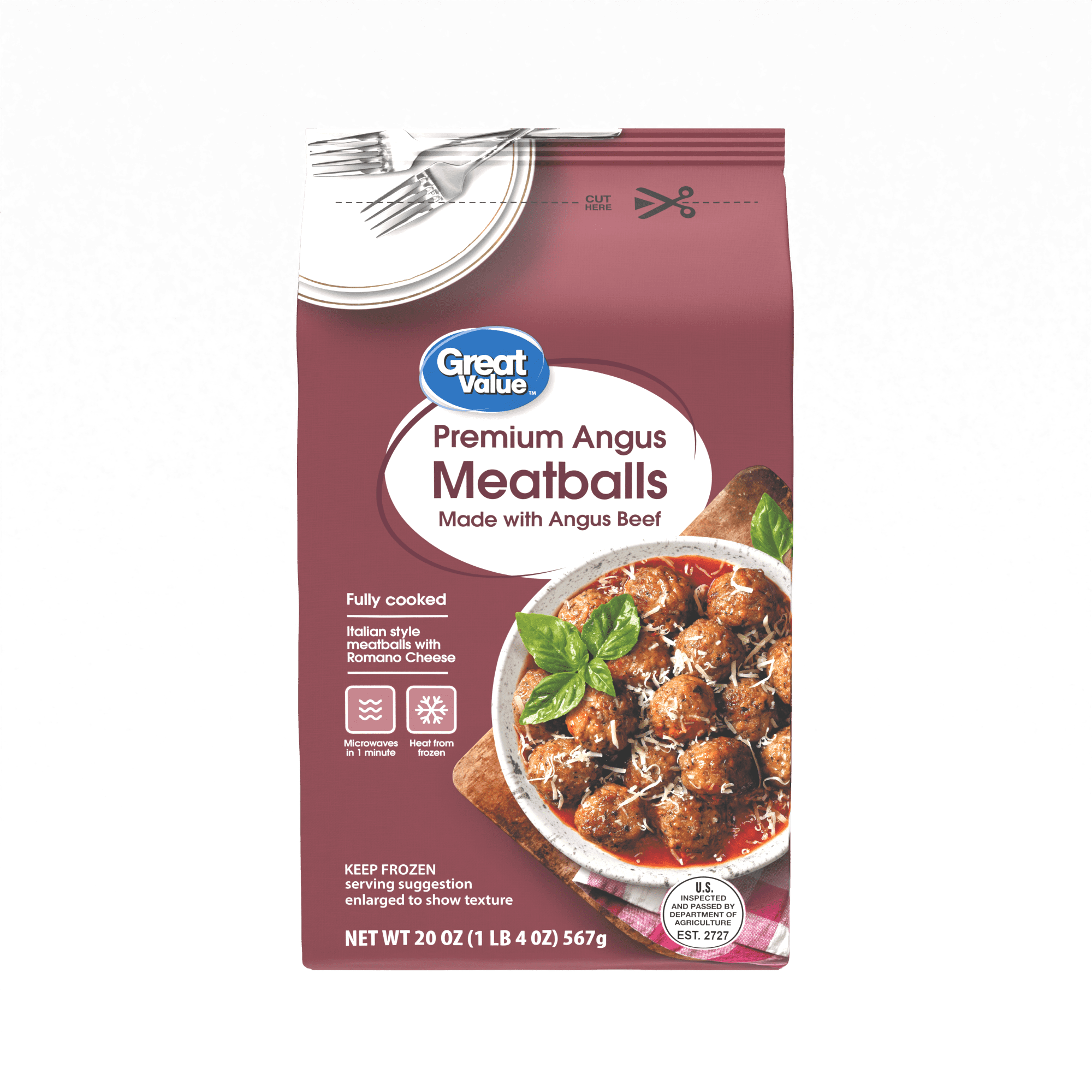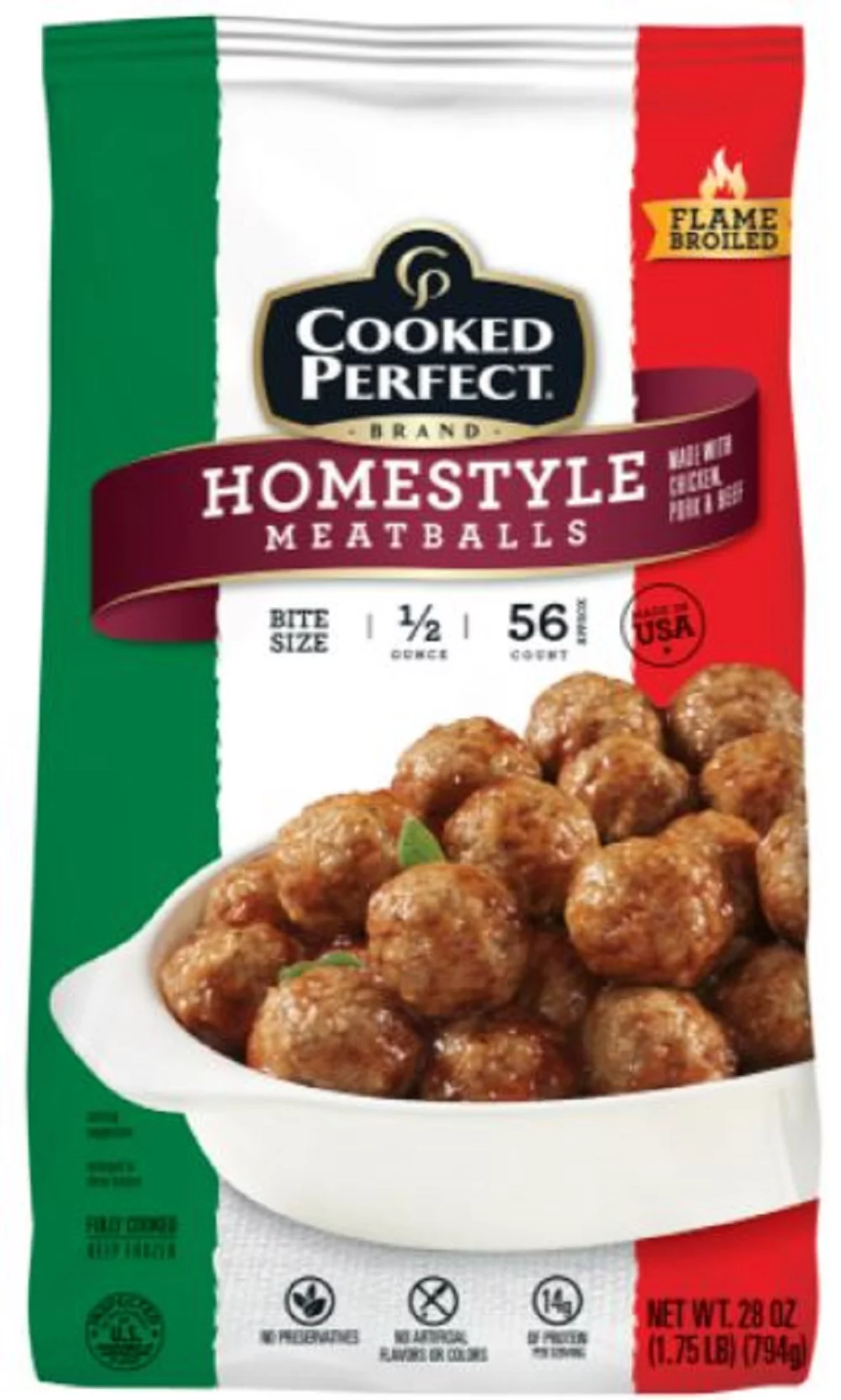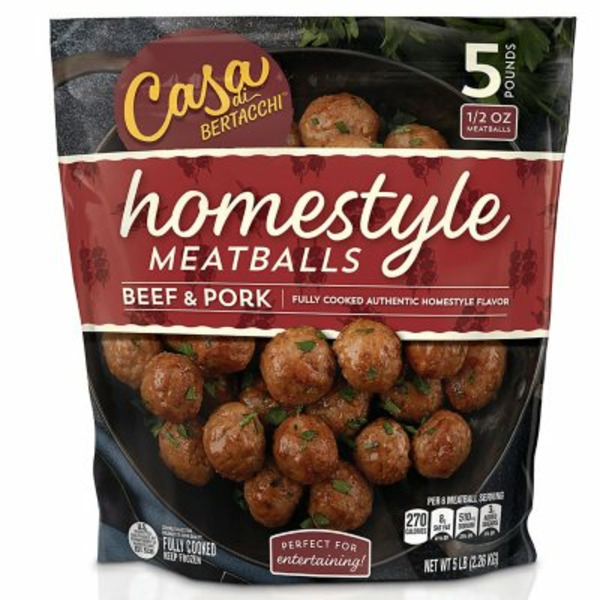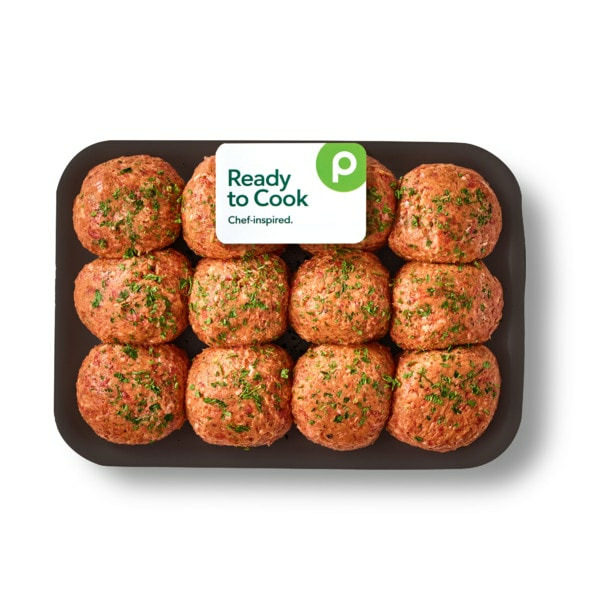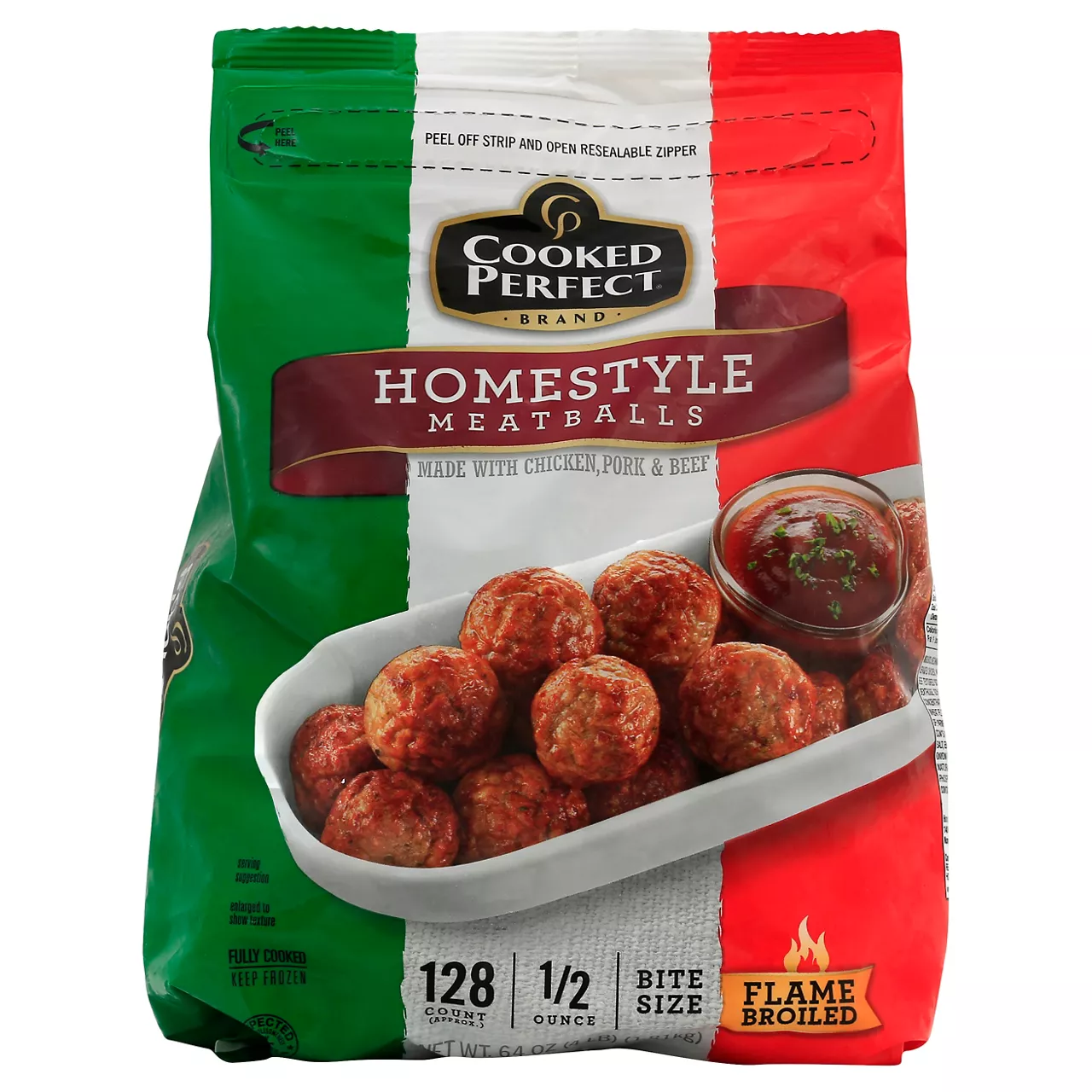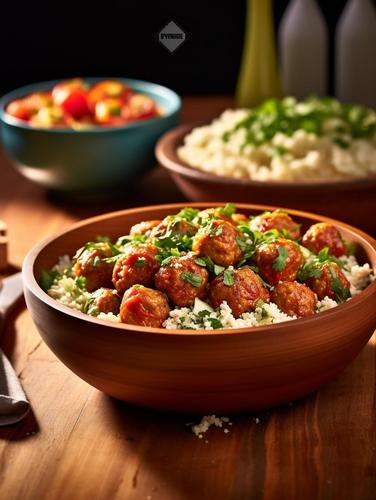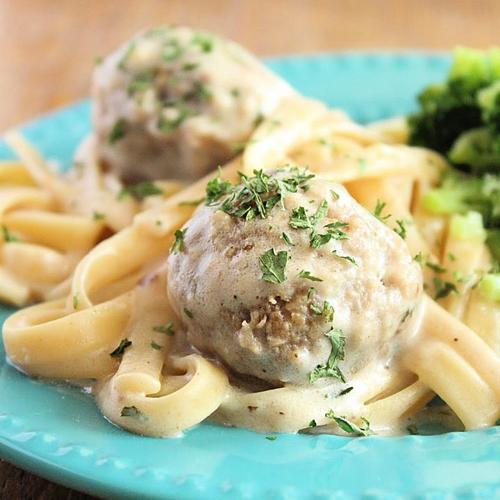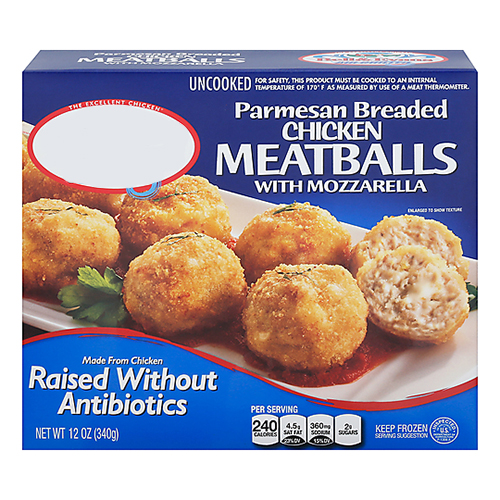MAIN DISHES
Meatball
Meatballs are versatile, bite-sized balls made from ground meat, typically seasoned with herbs, spices, and other flavorful ingredients. A staple in many world cuisines, meatballs are popular in Italian, Middle Eastern, and Asian dishes, among others. Common meats used include beef, pork, veal, chicken, and turkey.
Meatballs can be enjoyed in numerous ways - baked or pan-fried, often matched with complementary side dishes like pasta, rice or even inside a sandwich. These savory, protein-packed morsels are a family favorite, frequently featured in home-cooked recipes and gatherings.
18%
CARBS
50%
FAT
32%
PROTEIN
1,036 Meatball Products
Oven-Baked Meatballs
Great Value Fully Cooked Homestyle Meatballs
Great Value Fully Cooked Homestyle Meatballs, Family Size
Bremer Family Size Original Meatballs
Rosina Meatballs, Homestyle
Great Value Angus Meatballs - 0.5 ounce, 18 ounce
Cooked Perfect - Frozen Homestyle Meatballs, 28 Ounces, 56 Appetizer Size Count (Frozen)
Casa di Bertacchi Homestyle Meatballs Beef & Pork
Aprons Seasoned Meatballs, Made from Seasoned Ground Chuck Prepared Fresh In-Store
Cooked Perfect Homestyle Meatballs
47 Recipes for Meatball
5
Hearty Berlin Cabbage and Meat Medley
4
Savory Meatballs with Rich Gravy on Classic Mashed Potatoes
2
Bold and Savory Meatballs with Tomato Sauce
4
Savory Russian Meatballs in Tomato Sauce
1
Savory Mexican Meatballs
3
Tantalizing Tender Meatballs
2
Nostalgic Sweet and Sour Meatballs
3
Succulent Parmesan Meatballs
Used In 11 Recipes
Effortless Instant Pot Spaghetti Feast
Grape Jelly Pressure Cooker Meatballs
5
Cheesy Baked Meatball Casserole
8
Instant Pot Fettuccine Alfredo and Meatballs
3
{Instant Pot} Pressure Cooker Grape Jelly Meatballs
10
Meatball Soup
1
Instant Pot Dump and Go Meatball Soup Recipe
5
Creamy Rigatoni Meatball Soup
Meatball Is Frequently Used With
Meatball FAQ
When it comes to cooking with meatballs, the most common issues people face often involve achieving the right texture and flavor. Many people struggle with meatballs that are too hard, dry, or lacking in flavor. Over-mixing the meat mixture or using lean meat often results in harder, less juicy meatballs. People also frequently wonder about the best type of meat to use for meatballs; a blend of meats typically delivers the most flavorful and juicy results. As for cooking methods, baking is a healthier option but pan-frying gives a tastier result with a crispy exterior. Simmering the meatballs in sauce not only flavors the sauce, but also keeps the meatballs moist.
Maximizing the flavor of your meatballs largely comes down to seasoning. Don't skimp on spices and herbs - which ones you choose will depend on the specific flavor profile you're aiming for. Adding a bit of Parmesan cheese to the mixture can also boost the flavor.
A few lesser-known tips for making spectacular meatballs include adding soaked bread instead of breadcrumbs for added moisture, and refrigerating the shaped meatballs before cooking to help them hold their shape better.
Why are my meatballs hard?
What is the best meat to use for meatballs?
Should I bake or fry my meatballs?
Why are my meatballs falling apart?
How can I make my meatballs more flavorful?
Can I simmer meatballs in sauce?
How do I keep my meatballs moist?
Can I substitute turkey for beef in meatballs?
Do I need breadcrumbs for meatballs?
Should I add cheese to my meatballs?
Expiration & Storage Tips
When does meatball expire?
Unopened store-bought meatballs, when stored in the refrigerator, should ideally be consumed within 1-2 weeks of the printed date on the package. However, once opened, they should be eaten within 3-4 days. Homemade meatballs, on the other hand, should be consumed within 3-4 days as well. Frozen meatballs can last for up to 3-4 months in the freezer. Before using, defrost overnight in the fridge or in a microwave safely using the defrost function.
How do you tell if meatball is bad?
When meatballs have gone bad, they may exude a foul or sour odor, change in color to greyish-brown, or develop a slimy or sticky surface. Also, if you notice mold or if the meatball does not smell like it normally does, then it is likely spoiled. It is best to throw away the meatballs if any of these signs are evident.
Tips for storing meatball to extend shelf life
• Always store meatballs in airtight containers or heavy-duty freezer bags.
• To extend the shelf life of meatballs, cool them quickly after cooking by placing them in shallow containers in the fridge.
• For freezing, layout meatballs in a single layer on a baking sheet and freeze them before transferring them to freezer bags. This prevents them from sticking together.
• Label each container or bag with the date. This will help you keep track of how long your meatballs have been stored and avoid food waste.
• If you plan to use your meatballs in sauce, it may be a good idea to freeze the meatballs and sauce separately to extend each component's shelf life.
EXPIRES WITHIN
7 - 21
DAYS
Substitutes
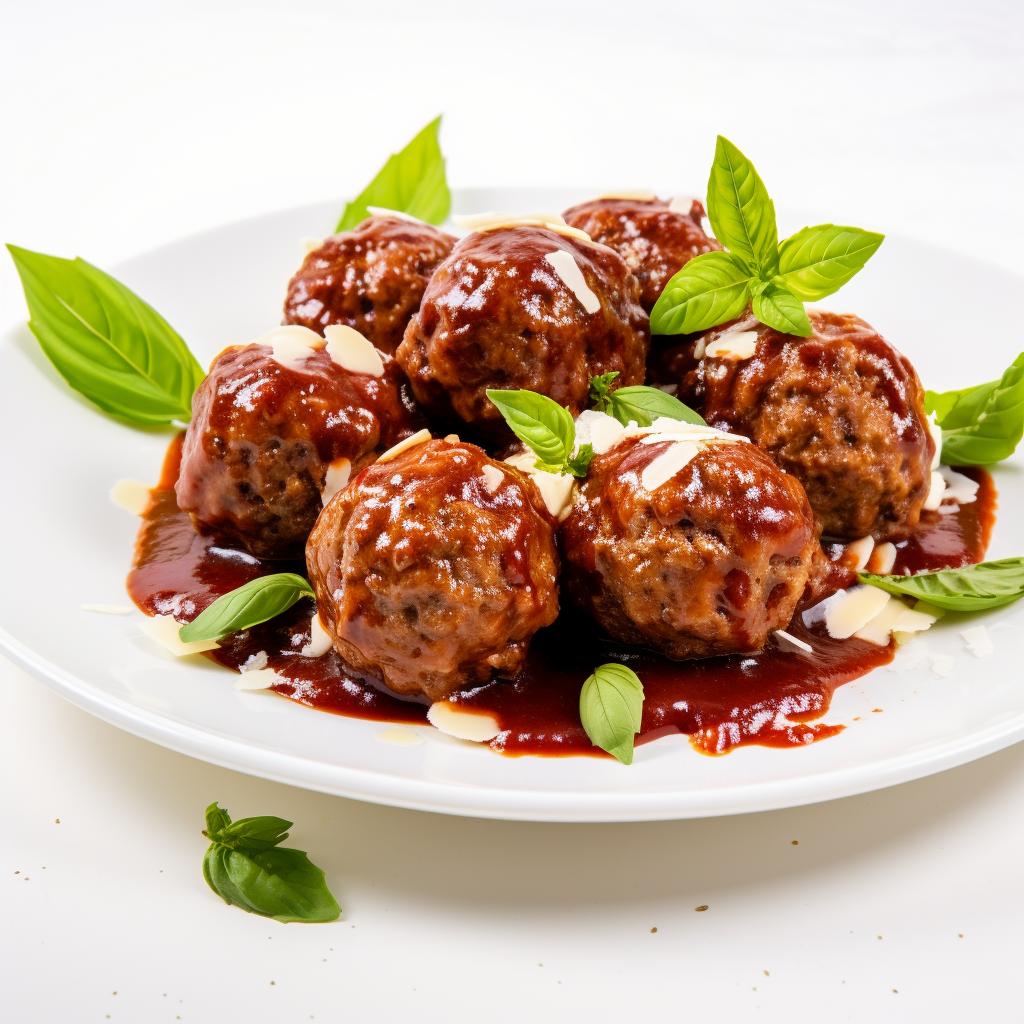
Porcupine Meatballs

Swedish Meatball
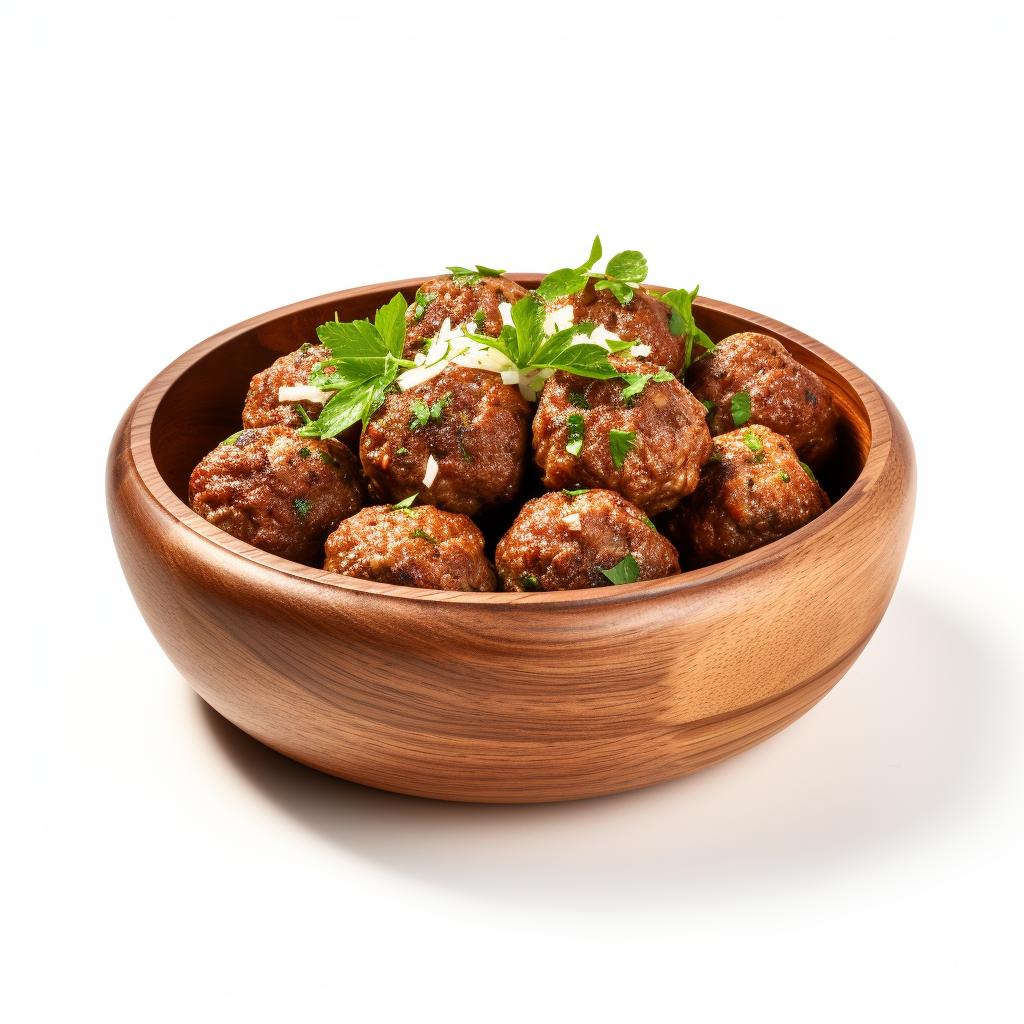
Vegan Meatball

Buffalo Chicken Meatball

Meatballs & Sauce

Ground Bison

Ground Round

Grass Fed Lean Ground Beef

Ground Turkey

Ground Veal
See All
Health Info
Macros
4g
CARBS
12g
FAT
7g
PROTEIN
Allowed on these diets
LOW FAT
HIGH CALCIUM
KETO
PALEO
WHOLE 30
MEDITERRANEAN
LOW CARB
LACTOSE FREE
GLUTEN FREE


